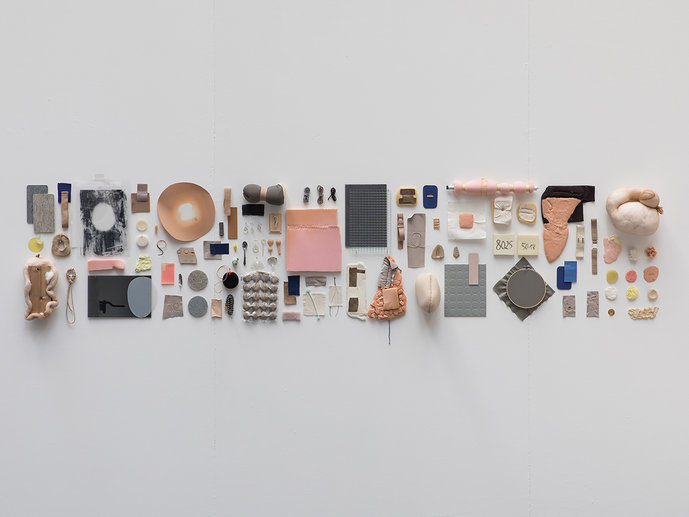

Photo: Oliver-Selim Boualam


Film still (© Sophia Stoewer)


Material research, Photo: Oliver-Selim Boualam
The term stress originally comes from materials science and describes the resisting power of a material before it breaks. 1950, stress was introduced into psychology by the physician and hormone researcher Hans Selye to describe the unspecific reaction of humans and animals to any kind of demand. Later, he introduced the concepts of disstress and eustress, assigning them a significant role in our societal and intersocial relations. Whereas the latter energizes us and describes a situation of openness, the former makes us feel overcharged and is perceived as uncomfortable and threatening.
Sophia Stoewer's diploma work Four Mothers examines early childhood strategies for coping with stress in order to make them fruitful in everyday life for adults. The resulting objects are tools that expand the own, already existing pool of strategies for stress management: A super heavy blanket simulates skin-like body pressure; a rhythmically purring torso-shaped arm holds your body and regulates the frequency of your heart beat; four different jewelries motivate sucking and thus stimulate the parasympathic nervous system; a mirror shows you always a bit happier than you actually are, making you embrace your rather positive minded self.
While the figure of the mother functions as a symbol for a primary caregiver, associated with a feeling of security and a feeling of belonging, Four Mothers provokes questions about care work, affection and intimacy in times of physical distancing, digitalization and virtualization.
Supervision: Füsun Türetken, Volker Albus, Mario Minale, Rebecca Steffani